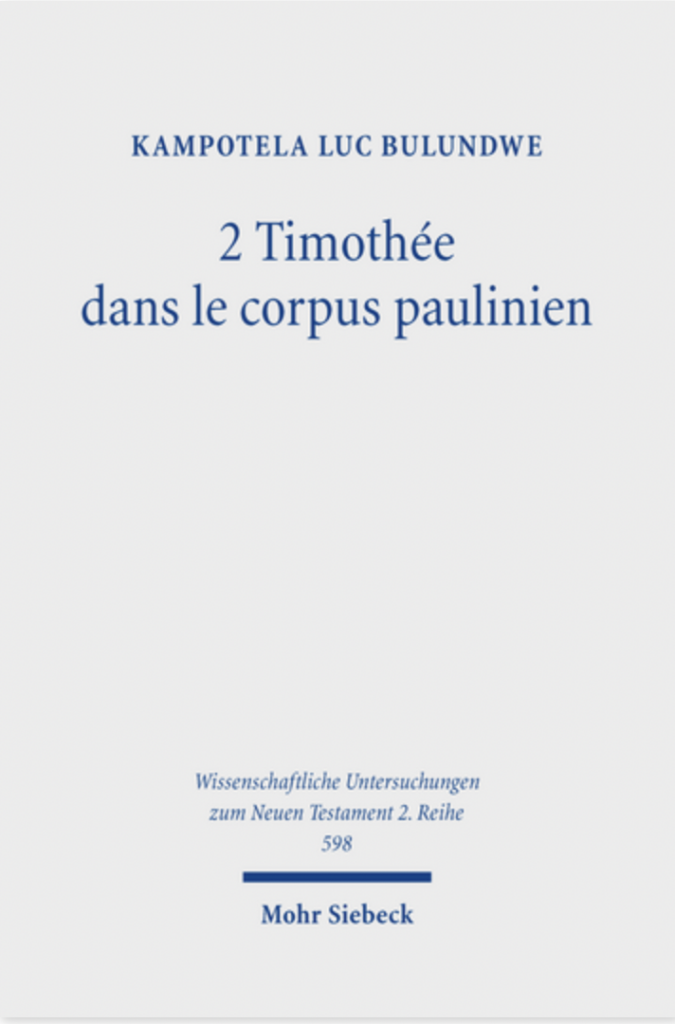
Mohr Siebeck’s WUNT series continues to produce monographs on the Pastorals, with two coming out nearly back-to-back near the end of 2023. Mark Langford’s Diagnosing Deviance: Pathology and Polemic in the Pastoral Epistles was WUNT 2/592, released a short while ago, and WUNT 2/598 is now available:
Kampotela Luc Bulundwe, 2 Timothée dans le corpus paulinien: Analyse mémorielle [2 Timothy in the Pauline Corpus: Memory Analysis]. Wissenschaftliche Untersuchungen zum Neuen Testament 2/598. Tübingen: Mohr Siebeck, 2023.
Even at a first glance, two acts of generosity stand out. First, Bulundwe has released the work in open-access form. Those who do not wish to pay the typically steep price for a physical copy of an academic monograph can work through a well-organized electronic facsimile here. Second, though Bulundwe’s work is in French, he has thoughtfully provided a detailed ten-page summary in English at the close of the book (pp. 429–38). I reproduce the opening of that summary here for convenience:
“This monograph examines the role of 2 Timothy (2 Tim) within the Pauline corpus through the lens of social memory. It aims to show that the letter’s literary genre — an epistolary farewell address — and content make it a hermeneutic key that guides the reading and transmission of a first collection of Paul’s letters. This collection includes the seven undisputed Pauline letters … and Colossians, and is considered to be Paul’s legacy. The main originality of the monograph lies in the specific consideration of 2 Tim in the Pauline literature and not only in the corpus of the so-called ‘Pastorals,’ the letters to Timothy and Titus (LTT).
“The first part describes the historical and methodological framework of the analysis. The second part consists of a reading of the whole letter through the lens of memory, while the third assesses the relationship between 2 Tim and the above-mentioned collection of Paul’s letters. Three realms of memory (lieux de mémoire) guide the assessment: the characters, the geographical locations, and the literary points of contact between 2 Tim and each letter.” (429)
